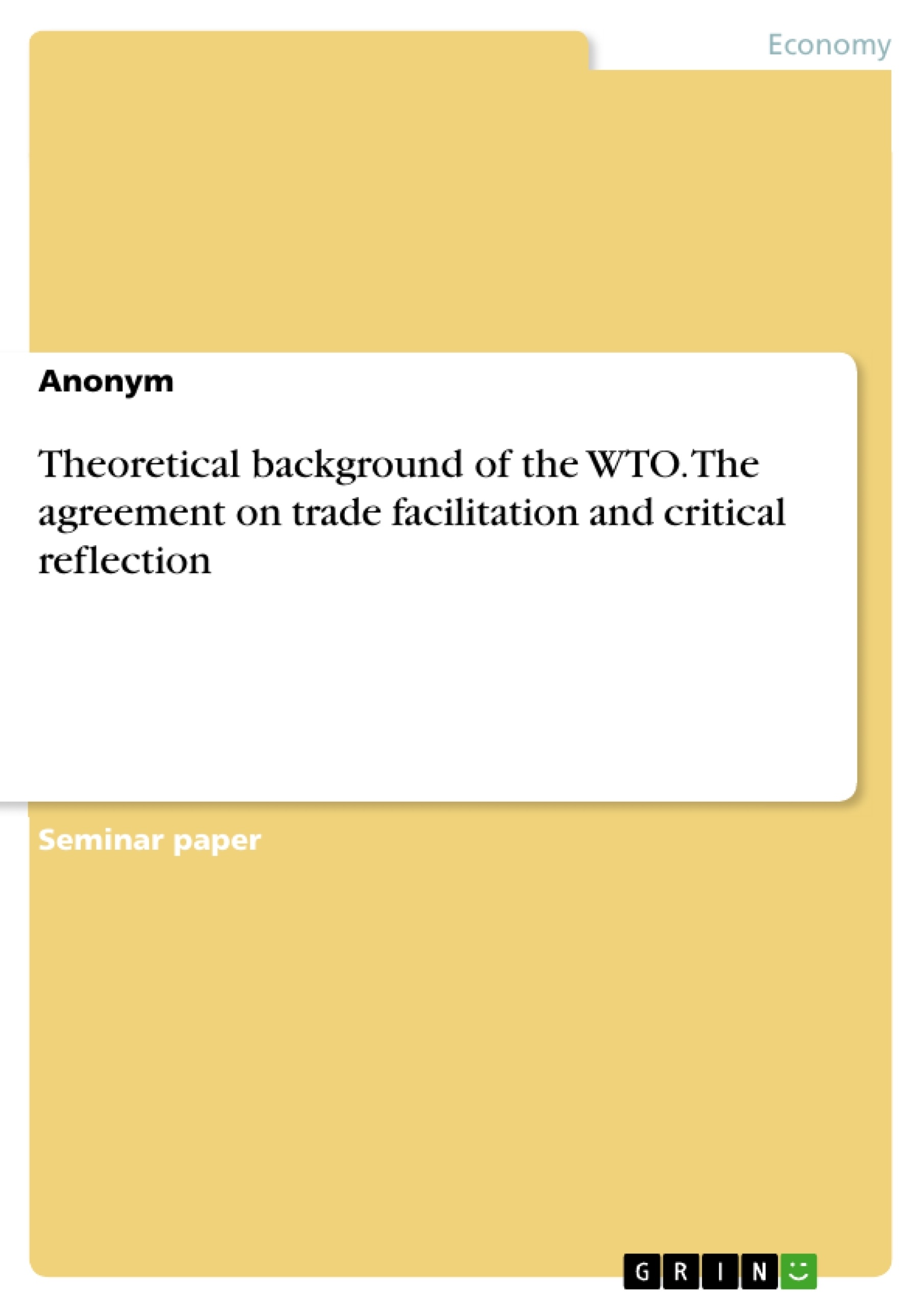The purpose of this paper is to outline the theoretical framework of the most popular economic theory approaches and the meaning of trade in general.
As part of globalization nations are moving closer together and the importance and intensity of the cooperation between countries increases continuously. During this development transnational networks are getting an increasingly important role regarding the regulation and control of various areas of life such as economic relations, environmental issues, security and law. These transnational institutions are influencing technical standards and norms, they affect environmental-, consumption- and law standards and their power is gaining in importance.
One of these bodies is the World Trade Organization (WTO) which was founded in the end of the 20th century with the purpose of creating a platform for negotiations about trade standards, regulating institutions in the trade sector and the development of multilateral agreements. The principles which underlain the work of the WTO include amongst others the subject of transparency, non-discrimination, and safety valves. With the evolution of a world ongoing getting more complex in trading subjects the facilitation, standardization and harmonization of global trade procedures get crucial and necessary for successful global growth. The implementation of the Agreement on Trade Facilitation (TFA) as the first multilateral agreement enforced in this context includes the establishment of global standards regarding customs and administrative measures and aims at the reduction of trading barriers and transaction costs in the future.
Inhaltsverzeichnis (Table of Contents)
- 1. Introduction
- 2. Theoretical Background: Different approaches on trade...
- 3. Theoretical Background of the WTO
- 3.1 Historical development of the WTO.
- 3.2 Structure and parameter of the WTO...
- 3.3 Main purpose and tasks of the WTO
- 3.4 Principles of the WTO ....
- 4. The Agreement on Trade Facilitation
- 4.1 Background of the Trade Facilitation Agreement...
- 4.1 Content of the Agreement on Trade Facilitation
- 4. 2 Consequences and Meaning for global trade in future.......
- 5. Critical Reflection
- 5.1 Chances of the Agreement on Trade Facilitation.
- 5.2 Risks of the Agreement on Trade Facilitation
- 6. Conclusion........
Zielsetzung und Themenschwerpunkte (Objectives and Key Themes)
This paper aims to explore the theoretical framework of trade and the role of the World Trade Organization (WTO) in facilitating global growth and development. It focuses specifically on the Agreement on Trade Facilitation (TFA) as a contemporary example of the WTO's work.
- Theoretical approaches to international trade
- The WTO's historical development, structure, and principles
- The Agreement on Trade Facilitation: its background, content, and implications for global trade
- The potential benefits and risks associated with trade facilitation
- Critical reflection on the TFA's achievements and future challenges
Zusammenfassung der Kapitel (Chapter Summaries)
- Chapter 1: Introduction: This chapter sets the stage by highlighting the growing importance of international cooperation in the context of globalization. It introduces the World Trade Organization (WTO) as a key institution in regulating and facilitating global trade.
- Chapter 2: Theoretical Background: Different approaches on trade...: This chapter delves into different theoretical perspectives on international trade, providing a framework for understanding the rationale behind trade agreements and the role of institutions like the WTO.
- Chapter 3: Theoretical Background of the WTO: This chapter provides a comprehensive overview of the WTO, including its historical development, organizational structure, main objectives, and key principles that guide its operations.
- Chapter 4: The Agreement on Trade Facilitation: This chapter focuses on the Agreement on Trade Facilitation (TFA), examining its background, content, and potential consequences for global trade. It explores how the TFA aims to streamline customs procedures and reduce trade barriers.
- Chapter 5: Critical Reflection: This chapter delves into a critical analysis of the Agreement on Trade Facilitation, exploring both its potential benefits and risks for global trade. It examines the potential impact on different countries and stakeholders, considering both positive and negative aspects.
Schlüsselwörter (Keywords)
The paper focuses on key topics such as globalization, international trade, the World Trade Organization (WTO), the Agreement on Trade Facilitation (TFA), trade facilitation, trade barriers, transaction costs, global growth, development, and critical reflection.
- Quote paper
- Anonym (Author), 2018, Theoretical background of the WTO. The agreement on trade facilitation and critical reflection, Munich, GRIN Verlag, https://www.grin.com/document/1015125



